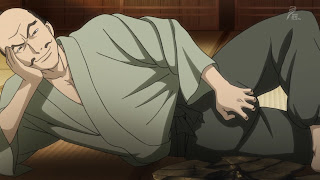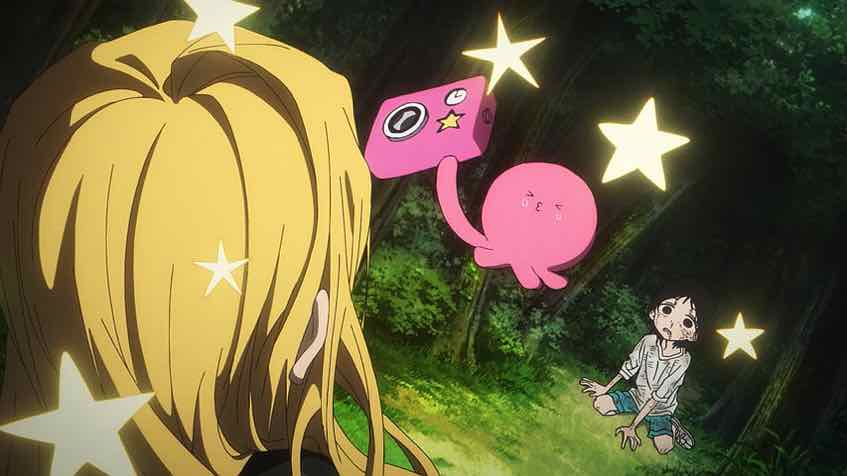Memo to Japan: Just what the fuck are you thinking?
I would really love to know who gave the green light to this series. An anime – three cours, no less, from early reports – about a tea master. Just who, exactly, is the target audience for this thing? Besides, me, I mean – but don’t go by me. I’m a whore for anything Japanese and historical, but I’m the worst barometer for anime popularity there is. I’d rather go to K-Books than watch K-On. I much prefer Outlaw Star to Lucky Star. And I’d poke my own eyes out before having to watch Bakemonogotari again.
Of course, inevitably, this series is great. Beee Train’s animation is excellent, the voice work is top notch, and veteran Koichi Mashimo directs with a brilliant respect for silence, building tension slowly at key moments through the episode like a great live-action thriller. But in the end, this isn;t the story of great warlords, like Sengoku Basara – it’s the story of a lousy warlord who also happens to be an aesthete, Sasuke Furuta. Yes, he happens to work for the baddest dude in your Japanese history textbook, Oda Nobunaga, and Hideyoshi and Tokugawa Ieyasu are players here, too. But all those big names are a sideshow to Sasuke and his love of nice things, especially tea related. While the first episode covers an actual major event – the end of traitorous warlord Matsunaga – it’s really much more concerned with the fate of his esteemed tea kettle, The Hiragumo. Matsunaga (in a scene well-known in Japanese history) destroys his precious tea vessel as he commits suicide rather than see it fall into Nobunaga’s hands. Much is made of Sasuke’s heroic efforts to salvage the lid, and of it’s fate thereafter. The scene comparing the worth of the Hiragumo to Oda’s mammoth new warship is nothing less than brilliant.
There’s a lot more to like here, not least of which is seeing Oda not portrayed as a preposterous ogre for a change. Scary and strange he may be, but he’s just a man – and that may be the first time I’ve seen him portrayed this way in anime. And while aesthetics are the main course here, there’s also a deft sense of the politics of the day – how every sentence contains subtle undercurrents that the listener ignores at their own peril. In terms of dialogue – not ignoring the use of the pause as a part of it – the writing here is truly as good as you’ll see.
I don’t know who’ll be watching this. It is a much-honored manga, so perhaps there’s a small cadre of tea otaku out there who will follow along. I can only hope it continues to be subbed, because it would be a shame not to follow this one and – obviously enough – I don’t see it getting licensed.





